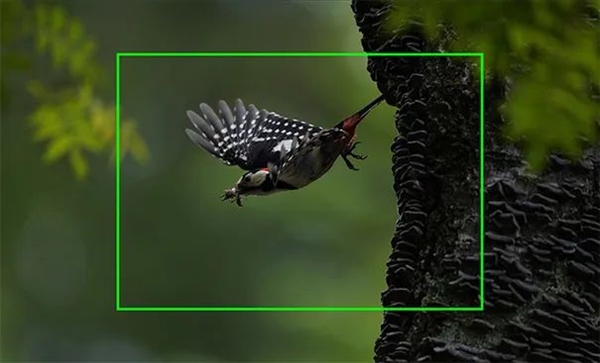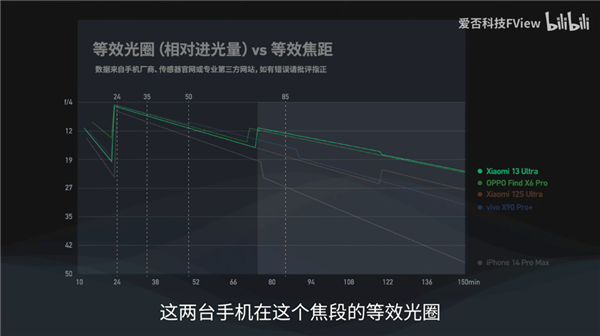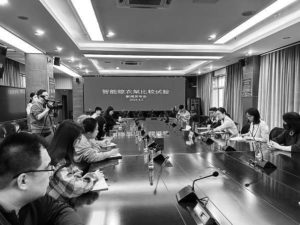What the hell is the “equivalent aperture” advertised by mobile phone manufacturers?How to calculate

[ad_1]
The last time I talked about “equivalent aperture” here was in February 2020. Today, 3 years later, mobile phone manufacturers have generally used the “equivalent concept” to calculate and compare the amount of incoming light. Do you still reject the “equivalent aperture”, or do you think that the equivalent aperture is just the “equivalent depth of field”?
Why promote the concept of “equivalent”?
“Equivalent” is by no means a push, but allows us to use a unified standard to quickly compare the shooting capabilities of different format cameras. The equivalents are focal length (angle of view), aperture (incoming light and depth of field), and magnification.
For the lens,Focal length and aperture are inseparablewe can’t just be equivalent to one but not the other — we can’t just do beneficial equivalence.
How to Calculate “Equivalent”
Equivalent focal length = physical focal length x equivalent coefficient
Equivalent aperture = aperture × equivalent coefficient
Equivalent magnification = magnification × equivalent coefficient
And equivalent factor = 43.3 ÷ sensor diagonal length
(For ≥Type1/2 sensors, 2.7 ÷ Type size can also be used)
What exactly does the equivalent aperture represent?
Taking a Type1 sensor, 23mm equivalent focal length, and F1.9 aperture lens as an example, it has an equivalent aperture of F1.9×2.7 ≈ F5.1, that is, it has the equivalent aperture of a full-frame camera with a 23mm F5.1 lens.basically the same depth of fieldand with a full-frame camera with an F5.1 lensApproximate low-light capabilities*.
* The premise of low-light shooting capability is that the two sensors have the same technical level, shoot with the same composition, and have uniform pixels (high-pixel thumbnails).
How to deal with exposure?
For a long time, the biggest controversy about the concept of “equivalent aperture” is exposure: after the aperture is equivalent, should the exposure parameters be adjusted?
First of all, the “equivalent aperture” is mainly used for comparison in the previous period.In actual shooting, youIt does not needConsider equivalents and vary exposure parameters.
Secondly, if the two devices are set to the same shutter speed and equivalent aperture, and the sensitivity is adjusted to achieve the same exposure, the result is that the signal-to-noise ratio of the photo is basically the same.
For example: APS-C format (1.5x) + F1.4 aperture + ISO1000 sensitivity, and full frame + F2.0 aperture + about ISO1500 sensitivity
The three elements of exposure are aperture, shutter speed, and sensitivity.here, onlyshutter speed is absolute.
The effect of cropping
Before, many friends would ask: Will the equivalent aperture and image quality be affected if the full-frame camera chooses the APS-C cropping mode for shooting? There are two situations here.
Stand at the same position to shoot the distant view, and compare the 100% magnification of the center of the picture. At this time, the picture we don’t need is cropped, so the cropping will not affect the equivalent aperture and image quality.
If it is the same composition for comparison (whether it is to adjust the shooting distance or the focal length of the lens), no cropping must have higher pixels than cropping.We need uniform pixels for comparison, andThumbnailing high-resolution images will improve the signal-to-noise ratio– This means cropping will lose quality. (Supplement: Increasing the signal-to-noise ratio will also increase the tolerance)

summary
Today, we often see mobile phone manufacturers mention the increase in light flux compared to previous generation products or competing products – this is a combination of sensor size, sensor type and lens aperture, which is in line with the equivalent concept. It is inaccurate to simply say that “the bottom class crushes people to death”.
As more and more digital bloggers and evaluation media begin to use the equivalent concept, ET is very pleased!
* When the light is sufficient, the effect of the equivalent aperture is weakened; the outsole is naturally easier to make high pixels, so as to obtain better resolution.

Reference article:
Dpreview: “What is equivalence and why should I care?”
Landuo Camera Rental: “The Key Photographer’s Talk (3) -[Archive for future reference][Learning to spare]The derivation and proof of common key photography principles”
[ad_2]
Source link








